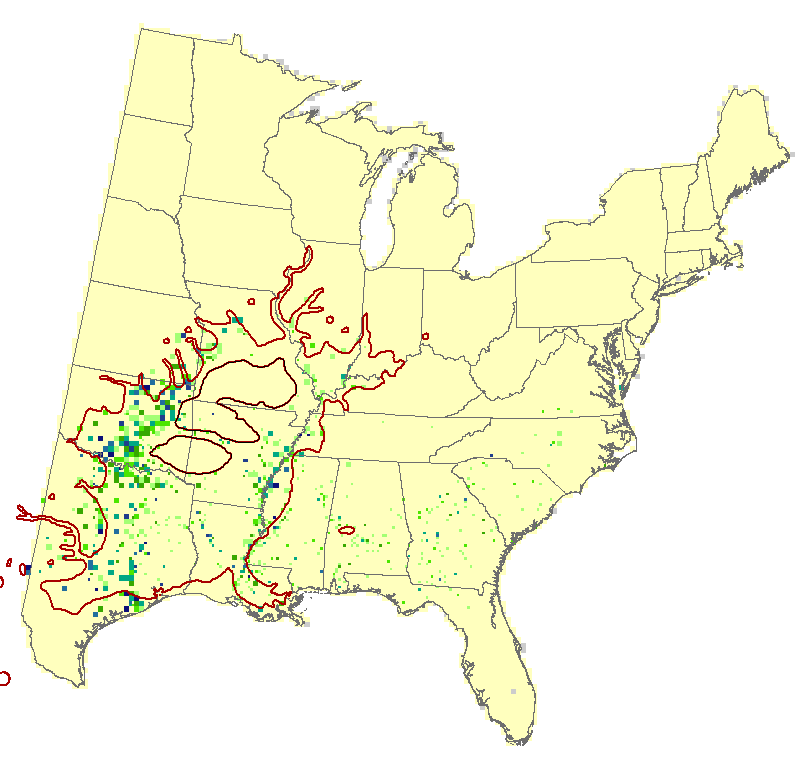pecan (Carya illinoinensis)
Model Reliability: Low
| GCM SCENARIO | % Area Occ | Ave IV | Sum IV | Future/Current IV |
|---|---|---|---|---|
| Actual | 2.7 | 8.7 | 6826 | N/A |
| RFimp | 3.3 | 4 | 3880 | 0.57 |
| CCSM45 | 8.7 | 3.9 | 9868 | 2.54 |
| CCSM85 | 26 | 3.6 | 27676 | 7.13 |
| GFDL45 | 21.8 | 3.7 | 23312 | 6.01 |
| GFDL85 | 44.7 | 3.7 | 48607 | 12.53 |
| HAD45 | 25.1 | 3.6 | 26657 | 6.87 |
| HAD85 | 49.3 | 3.7 | 52976 | 13.65 |
| GCM45 | 27.3 | 2.5 | 19946 | 5.14 |
| GCM85 | 52.3 | 2.8 | 43090 | 11.11 |
Regional Summary Tree Tables
Summaries for tree species are available for a variety of geographies, in both PDF and Excel format. These summaries are based on Version 4 of the Climate Change Tree Atlas
Interpretation Guide
Pecan is a narrowly distributed (3.9% of area), sparse, but high IV species common in several southern species, concentrated in Texas and Oklahoma but extending into Illinois. Its model, of low reliability, shows a huge expansion of habitat, especially under RCP 8.5. However, the SHIFT model shows that only a very small portion of the projected suitable habitat could get colonized naturally within 100 years. Its adaptability is low, resulting in a poor (4.5) to fair (8.5) overall capability to cope with a changing climate. SHIFT does, however, score it to be a decent infill species.
Family: Juglandaceae
Guild: persistent, large seeded, advance growth dependent
Functional Lifeform: large deciduous tree
| 2.2 | -1.24 |
| -1.70 |  |
MODFACs
What traits will impact pecan's ability to adapt to climate change, and in what way?:
Primary Positive Traits
Primary Negative Traits
Fire topkill Insect pests Shade tolerance



